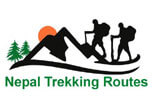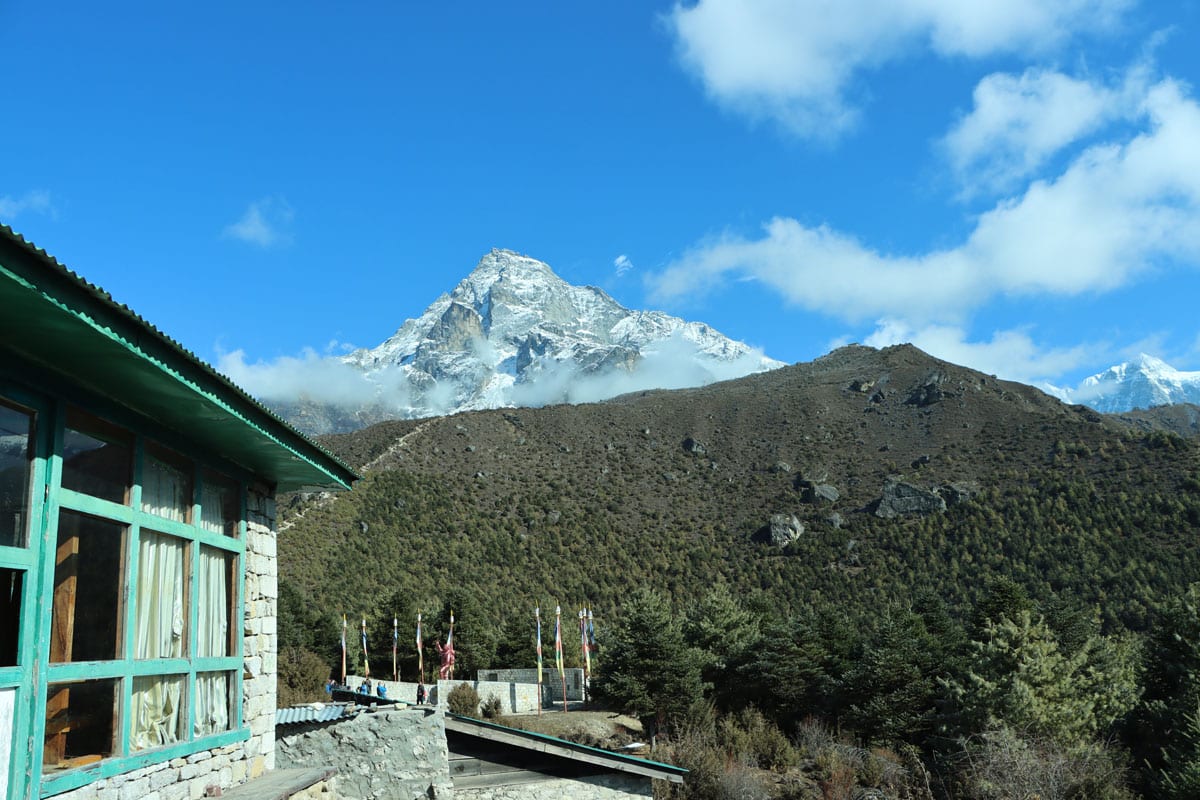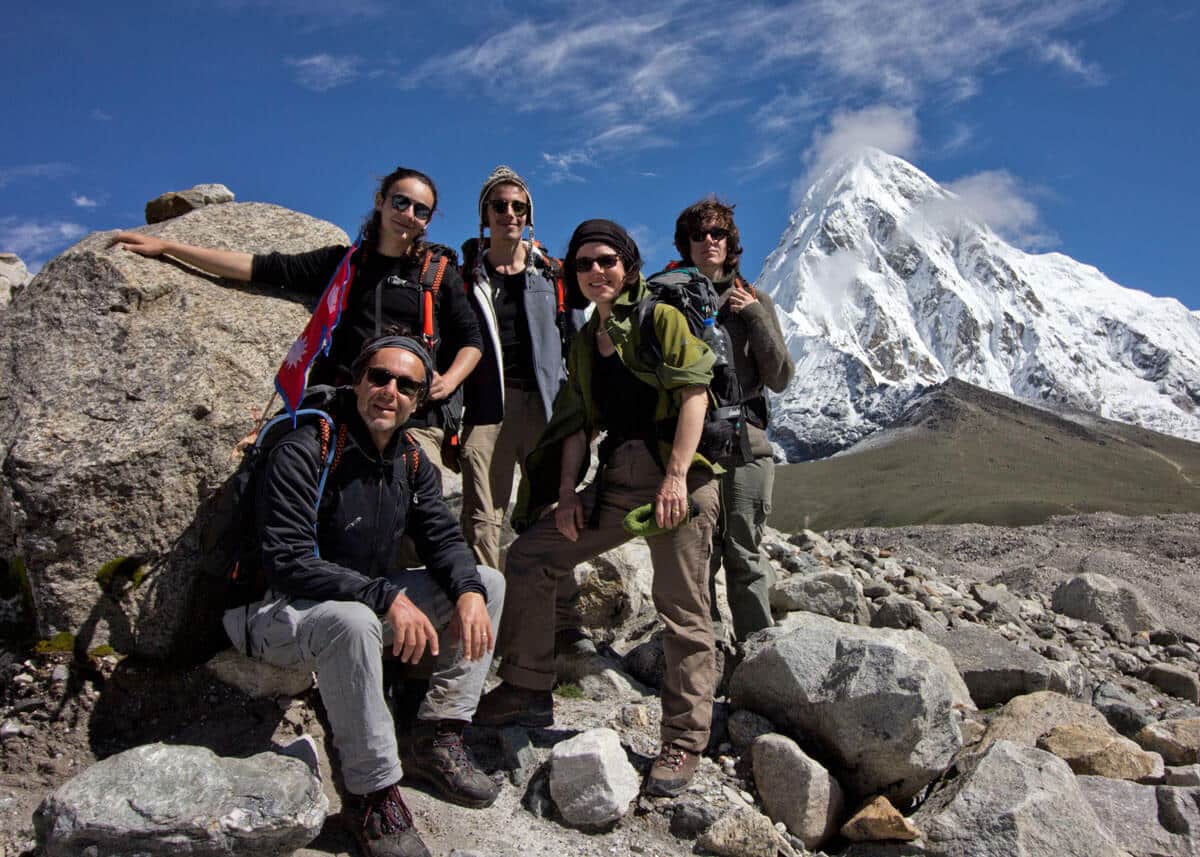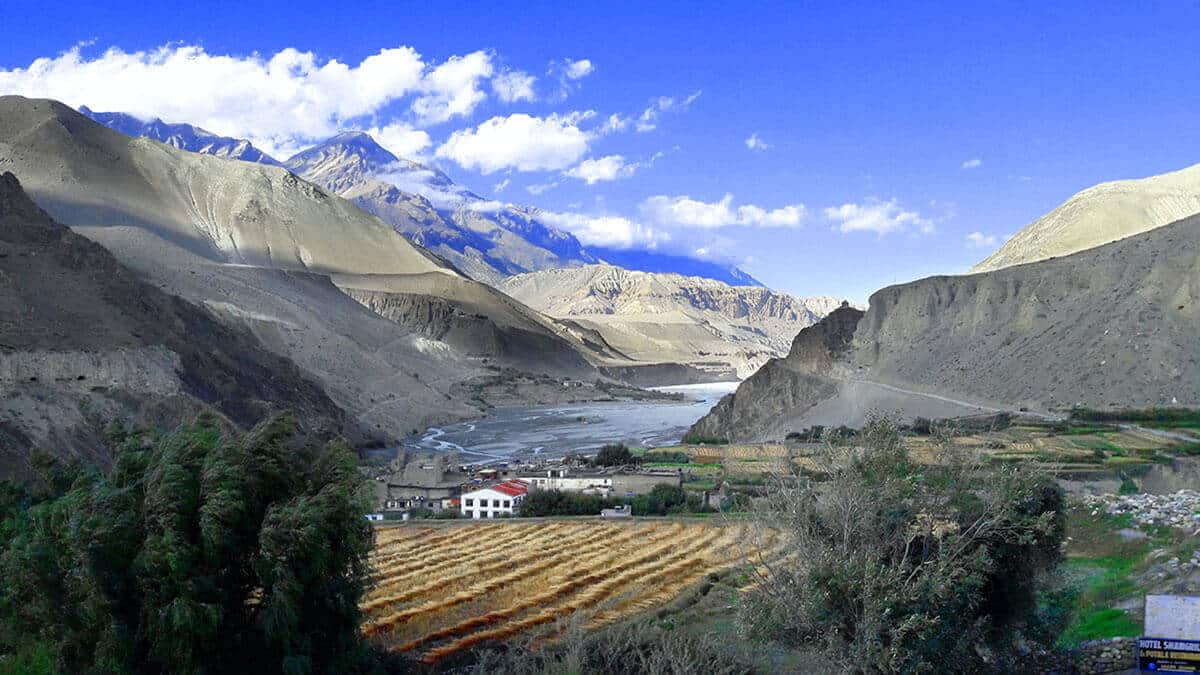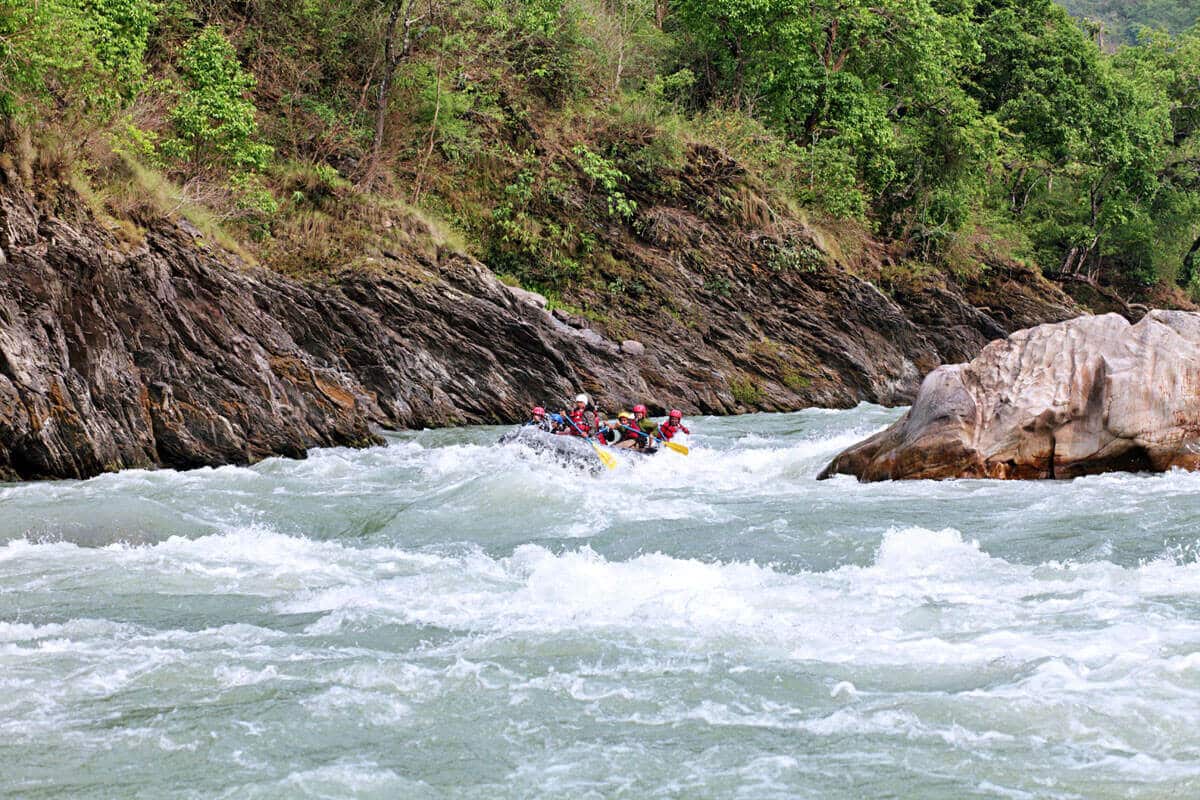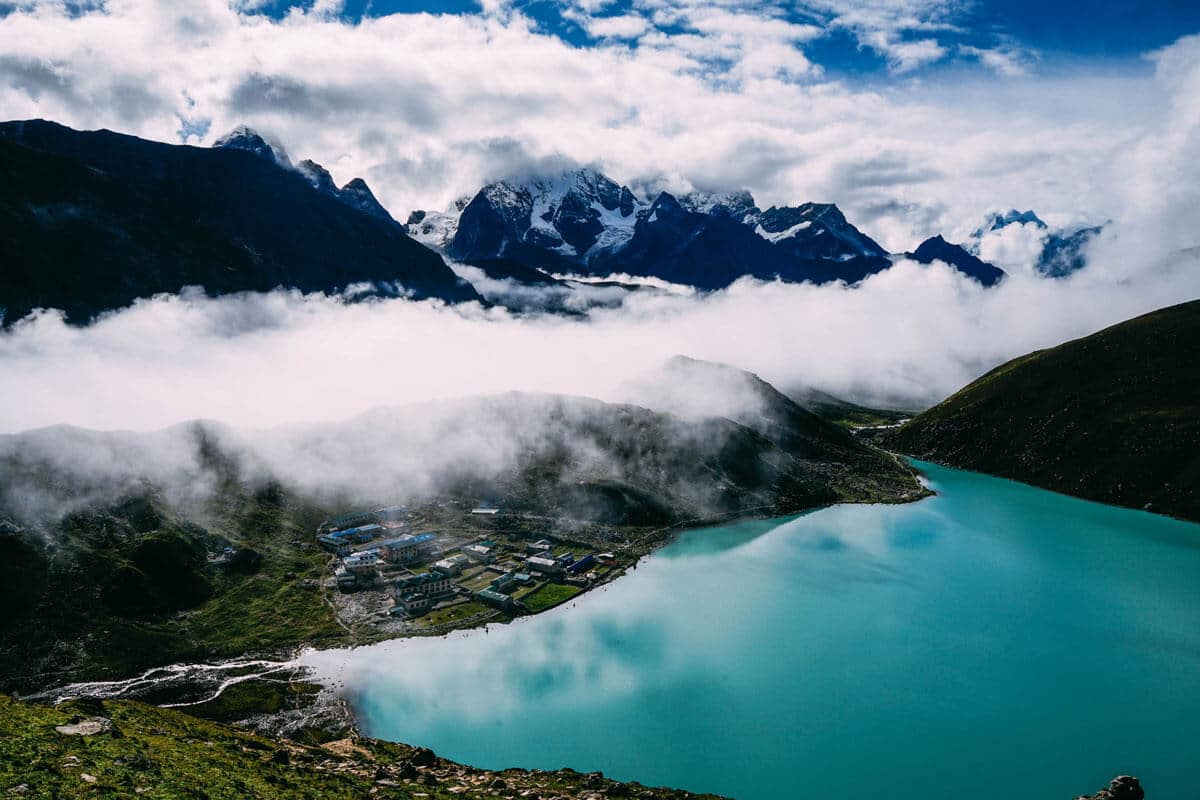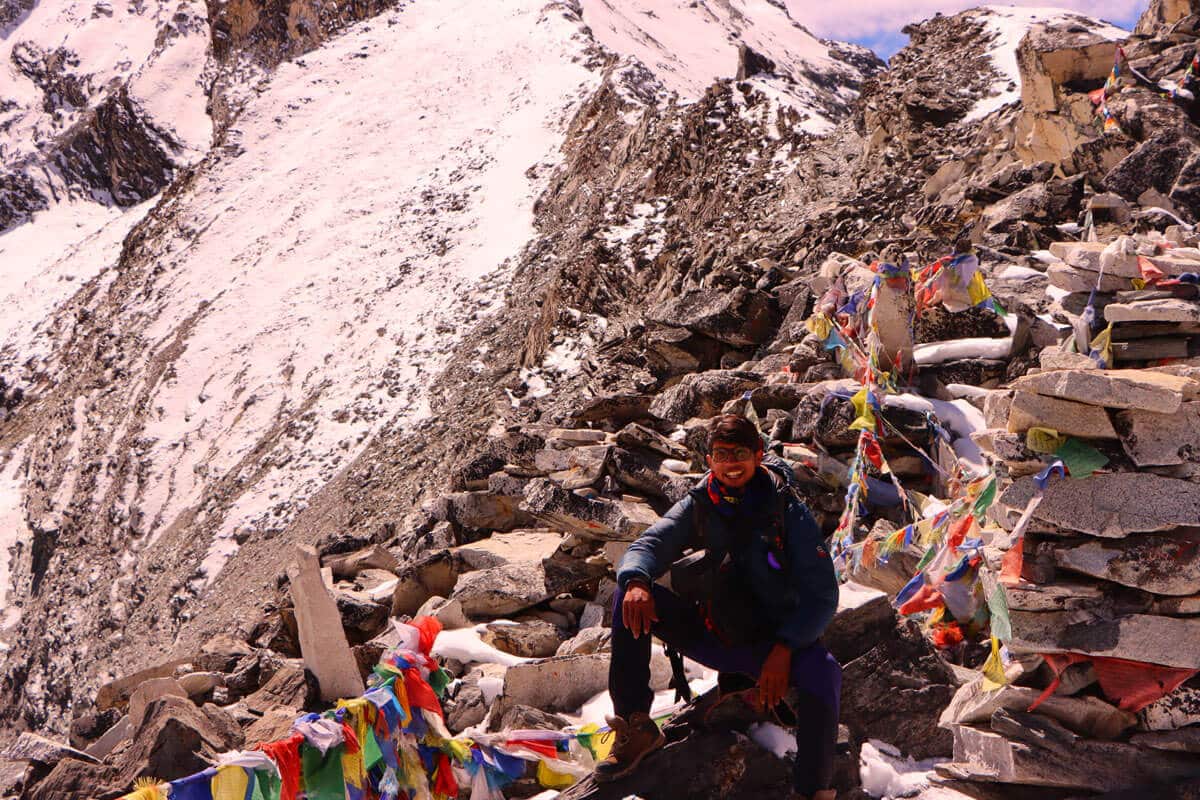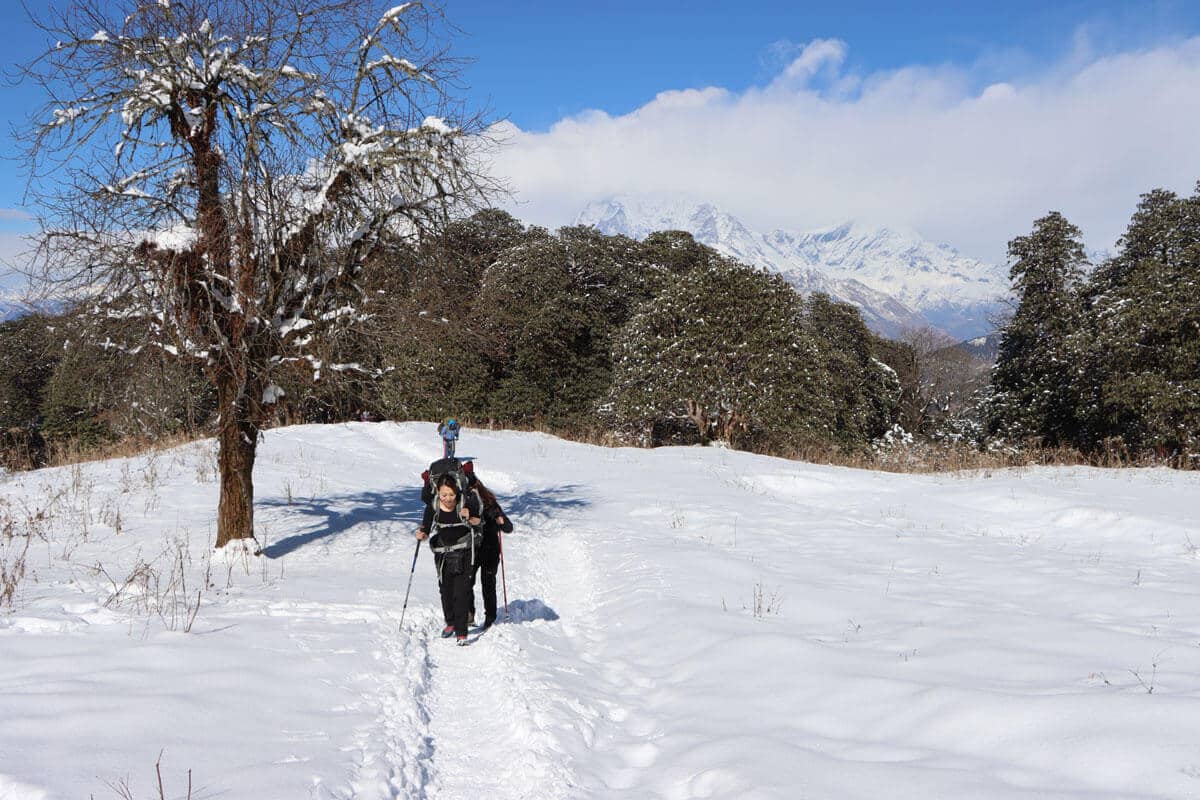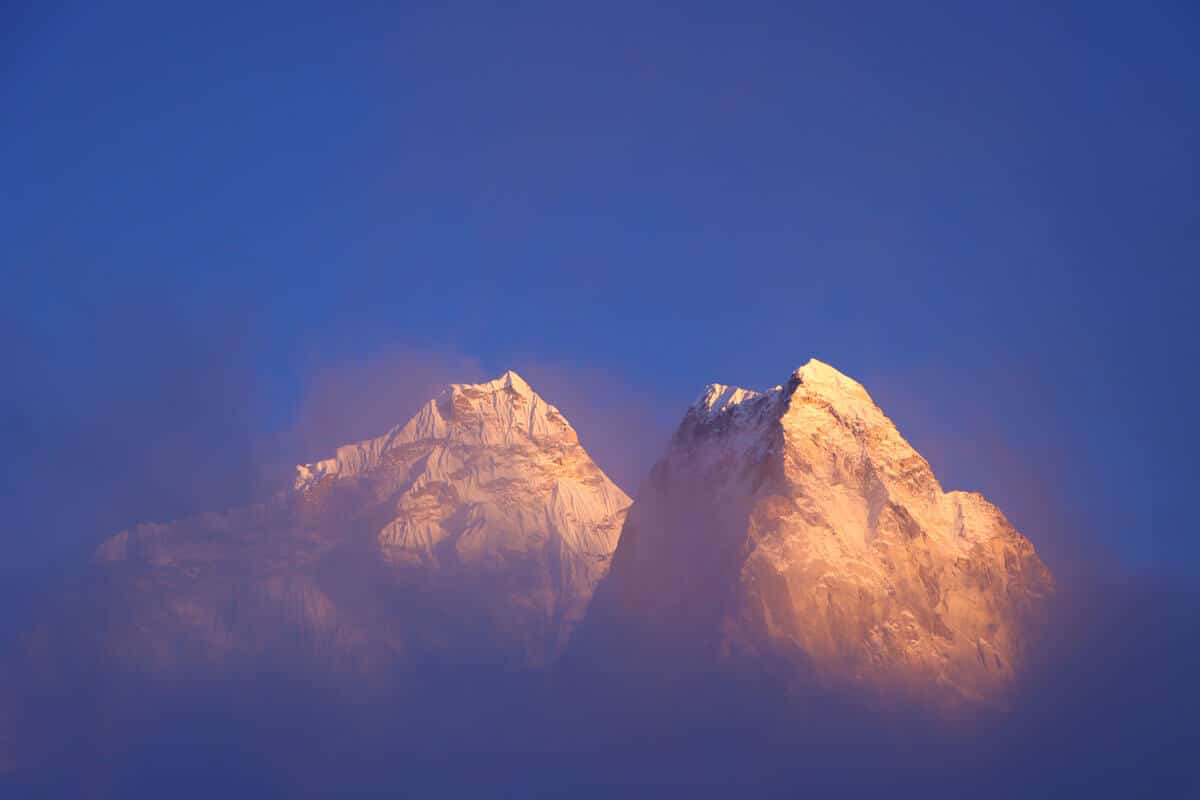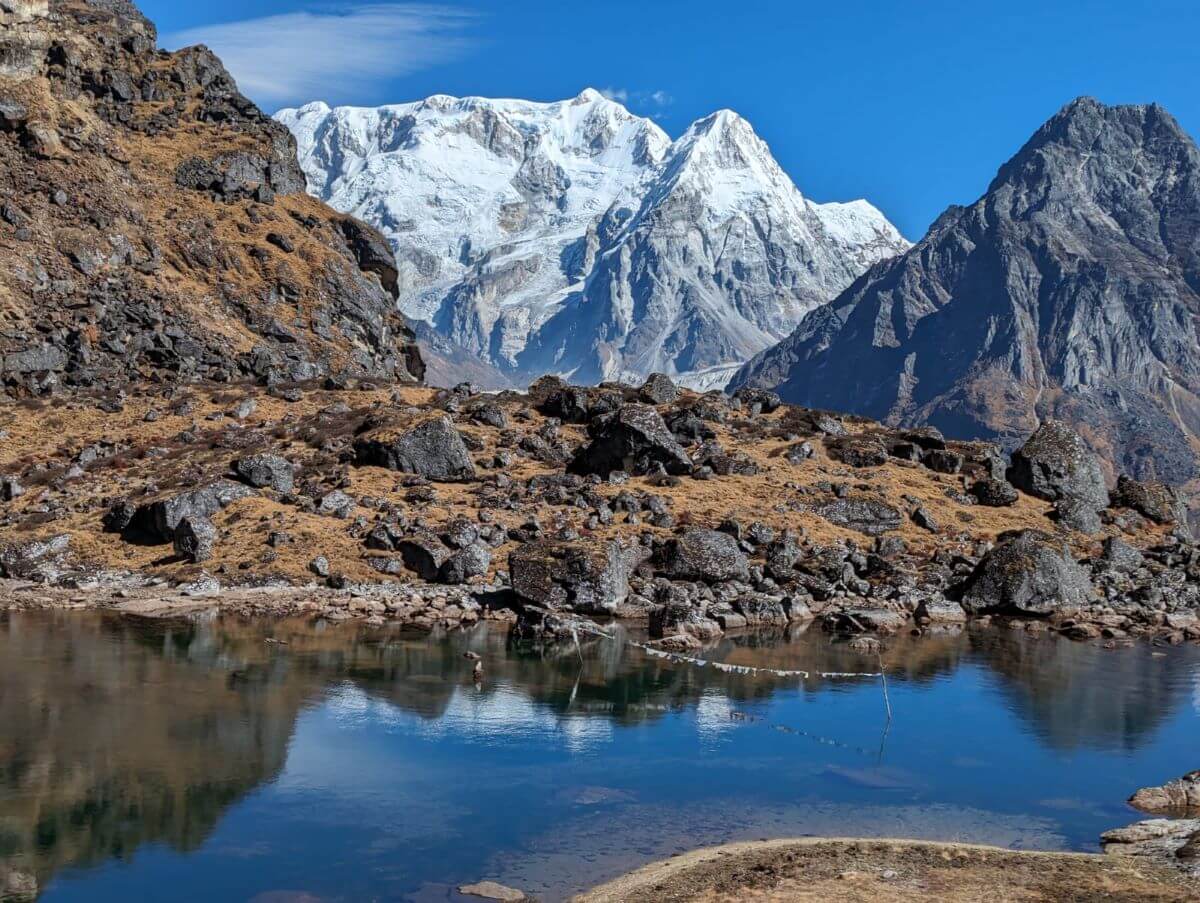
Lumba Sumba Pass Trek
Nepal , Off the Beaten Path Trek , Restricted Region Trek
Duration
20 Days
Tour Type
Trekking/Hiking
Group Size
1+
Accomodation
Hotel/Tent
Meal
B.L.D.
Max. Altitiude
5160 M
Best Season
Through Out The Year
Departure from
Kathmandu
Hightlight
• Newly discovered trekking destination of Nepal
• Camping trekking along the remote area of the Himalayas
• Kanchenjunga Conservation Area and Makalu Barun National Park
• Close view of Mt. Kanchenjunga (8,586m) and Mt. Makalu (8,485m)
• Rai, Sherpa, Tamang ethnic villages as well as their lifestyle, culture and tradition
• Crossing Lumba Sumba Pass (5,160m)
• Scenic flights to begin and return to Kathmandu
Overview
Lumba Sumba Pass Trek is among newly discovered trekking trails of Nepal. This trek was formally initiated from 2012 AD by Trekking Agencies’ Association of Nepal (TAAN). This route takes you to the easternmost section of the Great Himalayan Trail (1,700 km) of Nepal. It connects Kanchenjunga region trekking with Makalu region trekking. Mt. Kanchenjunga (8,586 m) is the 3rd highest and Mt. Makalu (8,485 m) is the 5th highest peak in the world. They are 2 among the 8 eight-thousanders located in the Eastern Himalayas of Nepal.
Mt. Kanchenjunga lies between Nepal and Sikkim of India while Mt. Makalu lies in the Mahalangur Himalayan Range. Despite the cultural diversity and natural beauty, Kanchenjunga Makalu trek was not much popular before a decade. However, due to the collective effort of the tourism agencies of Nepal, it is getting its popularity day over day.
This is one of the remote treks in Nepal that rewards you with the unexplored natural beauty. Besides, the lifestyle, culture and tradition of the Sherpa, Rai and Tamang ethnic communities are still untouched by the modern technology and tools. It is completely a camping trekking in Nepal as there are not enough teahouses and lodges en route. You will get lifelong experiences of a complete wilderness in the Himalayas. For a few days, you will completely remain detached from the human settlement areas.
Kanchenjunga Conservation Area Project (KCAP) and Makalu-Barun National Park are encompassed in this trip. Lumba Sumba Pass (5,160 m) joins these two protected areas of Nepal. During the offbeat trip in the Eastern Nepal, you will often encounter with red pandas and snow leopards including some bird species.
Lumba Sumba Pass Trek Itinerary
Lumba Sumba Pass Trek itinerary ranges from 16 days to 35 days. You know as this trek can be broken down into Kanchenjunga Base Camp trek and Makalu Base Camp trek separately as well. Alternatively, you can also do Kanchenjunga South Base Camp and Kanchenjunga North Base Camp trek.
After visiting Kanchenjunga region, you can do Makalu Base Camp trek through Arun and Barun Valley. From Makalu region, you can also reach Everest Base Camp trek by following the Great Himalayan Trail (GHT) of Nepal.
Kanchenjunga and Makalu regions are two of the ten major sections of the GHT Nepal. Lumba Sumba Pass trek itinerary has been always to be customized in a mutual understanding between you and the trekking agency.
Therefore, you should consult with a local tour operator of Nepal to plan this trip. Among the local tour operators, Nepal Trekking Routes is always flexible to help its customers plan the right trek or tour package.
To decide the right type of Lumba Sumba Pass trek itinerary, contact us without any hesitation. You can reach us via email, phone call, WhatsApp or online booking services as well. Choose the right medium as per your convenience.
Lumba Sumba Pass Trek Difficulty
To know about Lumba Sumba Pass trek difficulty, you need to know some major aspects of this trip. Nepal Trekking hours, food and accommodation facilities, remoteness, condition of the trails and type of the trekking should be considered for this. More than anything else, altitude gain and sickness caused by these plays a vital role as well.
Most of the trails and stopovers of Lumba Sumba Pass trek lies above 4,000 m. As soon as you reach above 2,500 m, you may suffer from altitude sickness any time. However, the experienced tour operator provides a professional team leader who is well know about such possible threats. The precautions taken by the team leader will make this trek difficulty less problematic.
Next, you have to walk along the remote trails away from the human settlement areas for a few days. As the trail takes you along the dense forests of KCAP and Makalu Barun National Park, the threat of wild animals is also there. The snow leopards has often been notice in this part of Nepal. Therefore, you should always walk in the group.
Walking for about 6/7 hours along the less maintained trails is a challenge in itself. As Lumba Sumba Pass trek lies in a remote area, you won’t find teahouses and lodges en route. This means, you don’t easily get food and accommodation facilities during this trek. In most of the trekking duration, you have to pack some ready-made food in the backpack. Finally, crossing a Himalayan pass above 5,000 m is the most significant challenge of this trek. Moreover, if you happen to make Lumba Sumba Pass in winter, it is almost unsurpassable!
Lumba Sumba Pass Trek Cost
As there is enough room for customization, Lumba Sumba Pass trek cost can also be different. First, the itinerary can go from 16 days to 35 days and even longer. The duration of the trek determines the cost of any trek or tour. Although you can drive to Taplejung from Kathmandu, it takes pretty much long time. Therefore, you have to take domestic flights to begin and to return to Kathmandu after completing this trek. Domestic flights are comparatively more expensive than roadway transportation.
Likewise, since it is a completely a camping trekking, you need to manage a crew containing different personnel. Numerous crew members has been to pay to organize a camping trekking. However, the miscellaneous expenses has been controll in this trek. It is so because there are no tea houses and lodges en route. You will have to compromise on the quality of food and accommodation. You will spend the nights at a tented camp by eating the food items prepared by the crew.
Lumba Sumba Pass Trek Map
Formally, Lumba Sumba Pass Trek Map begins from Taplejung ending at Mitlung on the very first day. Then, you will continue the trip towards Chiruwa, Lelep, Ela Danda and Seep Kharka. From Seep Kharka, you will trek to Olangchung Gola, which is the border between the Eastern Nepal and Tibet. Then, you move towards Upper Langmale, Pass Camp and reach Chaurikharka by crossing Lumba Sumba Pass (5,160 m).
Moving ahead, you will walk past Thudam, Kharka, Chyamthang, Hatiya, Gola and Gadhi. From Gadhi, you will catch a private jeep to drive to Khandbari and then Biratnagar. Finally, you will fly from Biratnagar to Kathmandu via a domestic flight.
Itinerary
Reception at the Kathmandu Airport and transfer to the hotel. Manage trekking gears by consulting with the agency.
You catch a morning flight from Kathamndu to Biratnagar via a domestic air service. While in the sky, you will have the stunning view of the eastern Himalayas including Kanchenjunga.
From Biratnagar, you begin the drive along the Mechi Highway that progresses along the green hills. Mostly, you will see the tea plantation areas on both the sides of the road. Occasionally, the road goes past some terraced fields cultivated with many seasonal crops and vegetables as well. Finally, you stop at Phidim, which is a small market area having some good teahouses and lodges. Overnight stay at a lodge.
Enjoying the amazing greenery of the eastern Nepal, you will drive through the pitched road up to Taplejung. From here, you will walk past Fungling, the first Sherpa Village. Then, the trail runs amidst the cardamom fields and alnus trees until you reach Hangdewa Village.
Crossing a suspension bridge over the Hangdewa Khola, you will move towards the Tamor River. Moving further, you will end up at Mitlung to spend the night at a tented camp.
Moving along the Tamor River banks amidst the paddy fields, you will continue the trip. By walking past a few villages like Siwa Bazar, Tawa and Thiwa, you will finally descend towards Chiruwa. Overnight stay at a tented camp.
The trail lead you further along the cardamom fields and paddy field on the Tamor River banks. Then, you will reach Tapethok Village, which is one of the largest village of Kanchenjunga region. Here, is the entry point of Kanchenjunga Conservation Area Project (KCAP).
After getting the permits checked here, you walk towards Pemba Village situated in the middle of the cardamom fields. By crossing this village, you will reach Lelep in the end. It is a village having a police station, hospital and the headquarters of KCAP. Overnight stay at a tented camp.
Following the trail that progresses along the Tamor River banks and dense pine forests, you reach a small old monastery. It is called Syangbo Choling Gompa. Descending towards Gowatar Village, the trail takes you towards the Phedi Khola.
Ascending for a couple of hours from here, you reach Ela Danda. From here, you will see the astounding view of Kasturi Peak and the Tamor River Valley. Overnight stay at a tented camp or local guesthouse according to the situation.
The trail runs through the alnus and rhododendron forests until you go across a suspension bridge over the Tamor River. Then, you happen to walk along the bamboo forests that are inhabited by red pandas.
Moving forward, you go across Maguwa surrounded by the alnus and rhododendron forests. As the trail across Maguwa is dangerous, you should walk carefully. Finally, you reach Selep Kharka to spend the night at a tented camp.
Moving across the Tamor River, you will reach Jongim Village surrounded by the snowcapped hills from all around. Afterwards, walking along the rhododendron and deodar forests, you will get to Ramite Village. You might have some glimpses of red pandas while on the walk!
Finally, you reach Olangchung Gola, a Sherpa village occupied by about 45 houses. You can visit a 465-years-old monastery preserving the golden manuscripts. This village has a KCAP office, police station, primary school and health post as well. Overnight stay at a tented camp.
Leaving the last human settlement area until next three days, you will continue the trip into complete wilderness. The trails are also not much clear as this is the least frequented section of KCAP. The trail penetrates through the pine and rhododendron forests, you will get to Jadak.
After that, you will move along the dense forests, you will end up today’s trek at Upper Langmale. Since the trail between Jadak and Upper Langmale is slippery, you should walk carefully. Overnight stay at a tented camp.
The trekking trail moves along the Tamor River banks first and then through the dense rhododendron forests. You are advised to walk with the group as the snow leopards are often seen on this section. Crossing Tangchetar, you will stop today’s trip at Pass Camp at a tented camp.
Today is the most interesting day of the entire Lumba Sumba Pass trek. You are going to cross the highest place of this trekking route. Don’t forget to keep the packed lunch in your backpack as there is no more teahouses en route.
Following the steep uphill and downhill trail amidst the dense forests, you will ascend towards Lumba Sumba Pass (5,160m). You should walk quite carefully as the trail is slippery. From the pass-top, you will have the wonderful sight of the snowcapped peaks and the whole KCAP.
Having your lunch sitting at the top while enjoying the enchanting view is a brilliant idea! After witnessing the astounding view from the top, you will descend towards Chaurikharka. Overnight stay at a tented camp.
Today, you will be walking past the human settlement areas after three days. After walking for about a couple of hours, you will arrive at the junction of two roads. One road towards Lyasa of Tibet while the other leads towards Thudam.
Following the bumpy and dusty road, you will end up at Thudam. It is a small Sherpa village having around 30 households. Overnight at a tented camp.
The trail runs through the banks of the Chhujung Khola by showing you the splendid view of the snowy peaks of Makalu region. The route moves along the bush and bamboo forests where you might also sight some red pandas. At the end of the day, you will reach Kharka for the night stay at a tented camp.
Walking along the dense rhododendron forests through the deserted land, you will reach Chaurikharka. This is not the Chaurikharka you walked past a few days back. It is one of the pasturelands for grazing cattle in the higher elevation.
From here, you see Chyamtang, the Arun River, Ridha Village and the road leading to Kimathangka. Kimathangka is the border between Nepal and Tibet in the Eastern Part. After a couple of hours’ walk, you will reach the Arun River.
Then, you cross a suspension bridge and reach Chyamtang for the night settlement. It is also a small Sherpa village having small traditional houses. Overnight at a tented camp.
The trail passes through the rhododendron forests where you can hear chirping of many bird species. This is the entrance to the Arun Valley, which is the home for a large bird species. Witnessing the mighty mountains of Makalu region, you will walk past Glimbir Village.
From this village, you should walk for about 3 hours to reach Hatiya for the night station. The trail is easy and comfortable. Hatiya is a small village having an entry point to Makalu Barun National Park. Overnight stay at a tented camp.
Initially, the trail moves along the banks of the Arun River until it meets the Barun River. Then, you walk for about another 4 hours to reach Gola, today’s destination. It is a small mountain village having nearly 12 houses inhabited by the Rai, Sherpa and Tamang people. Overnight stay at a tented camp.
Walking along the lowland trail that continues through the paddy fields, you reach Pathibhara. This is not the one having Pathibhara Temple of Taplejung district. Here, you can find some hotels, groceries and teahouses.
Moving further leaving the terraced farmlands and natural waterfalls behind, you will wrap up the trek at Gadhi. This is one of the oldest fortresses of Nepal that was occupied by the Nepalese Army during their fight with the Tibetan forces. Therefore, it has carried some historical significance as well. The village has a local school, primary health post and a police station. Overnight stay at a tented camp.
In the beginning, you descend along the Arun River banks and then ascend towards Num Village. From here, you will drive to Khandbari by sharing a private jeep with other fellow travellers. Khandbari is the district headquarters of Sankhuwasabha district. This is the last day of trekking and staying in Makalu Kanchenjunga region. Therefore, try to make it as memorable as it can be!
Morning flight back to Kathmandu from Tumlingtar nearby Khandbari. After landing at the Kathmandu Airport, relocation to the hotel. Shopping around Thamel Bazar. Handcrafted items: garments and relics are wonderful gifts to your people back in home country. By the agency, farewell dinner at a cultural restaurant as a part of hospitality.
The representative shifts you to the Tribhuvan International Airport according to the flight schedule.
Inclusion/Exclusion
- Airport pick-up and drop off service ,
- Trekking Guide and Trekking porter (Two participant=1 porter =Maximum 25 kg of luggage )
- 3** Hotel accommodation during the Kathmandu stay and tea house accommodation during the trek
- Breakfast, Lunch, & Dinner during the trekking,
- Sleeping bags, down jackets, duffel bags and trekking sticks if required,
- Trekking permit of National park,
- TIMS(Trekking Information Management System )
- Flight fare Kathmandu to Suketar and Suketar to kathmandu
- Insurance and equipment for the trekking staffs
- First aid kit
- Restricted area trekking permit
- Farewell dinner in Kathmandu with cultural program in typical Traditional Nepali restaurant
- Personal expenses
- Drinks, beverages, hot shower & Bar Bill
- Travel insurance & International Flight fare
- Tips for guide and porter
- Meals & hotel accommodation in Kathmandu (with out itinerary)
FAQ's
Sure, sure! As soon as you reach a place higher than 2,500m, you may suffer from altitude sickness. Take some preventive methods to avoid it. Walk slowly by taking enough rest; have enough water, food and sleep as well as keep some medicines like Diamox Oral in the backpack to avoid this health problem.
Although you have to cross Lumba Sumba Pass (5,160m), you don’t exactly need all the climbing gears. However, you can bring ice-axes, ropes, crampons, etc. if you are doing this trek in winter. You have to be a bit more careful while crossing this pass to avoid any mishap!
Yes, you need! This trek begins right from Taplejung and ends at Tumlingtar. You can fly to Suketar, Taplejung or fly to either Biratnagar or Bhadrapur and drive to Taplejung. While returning after completing the trek, you will have to fly to Kathmandu from Tumlingtar Airport. Or, if you love travelling by bus, this is also possible but it takes pretty long time.
Yes, you can as there is not any restricted area in this region. However, it is a newly discovered trekking trail that takes you through complete wilderness. The trails are not well maintained and there is threat of wild animals. Many times, you may miss the right trails. Therefore, we highly recommend you not to do Lumba Sumba Pass trek solo. Next, it is a camping trekking, so, a solo trekker in Nepal cannot do this trek even if they want it so!
